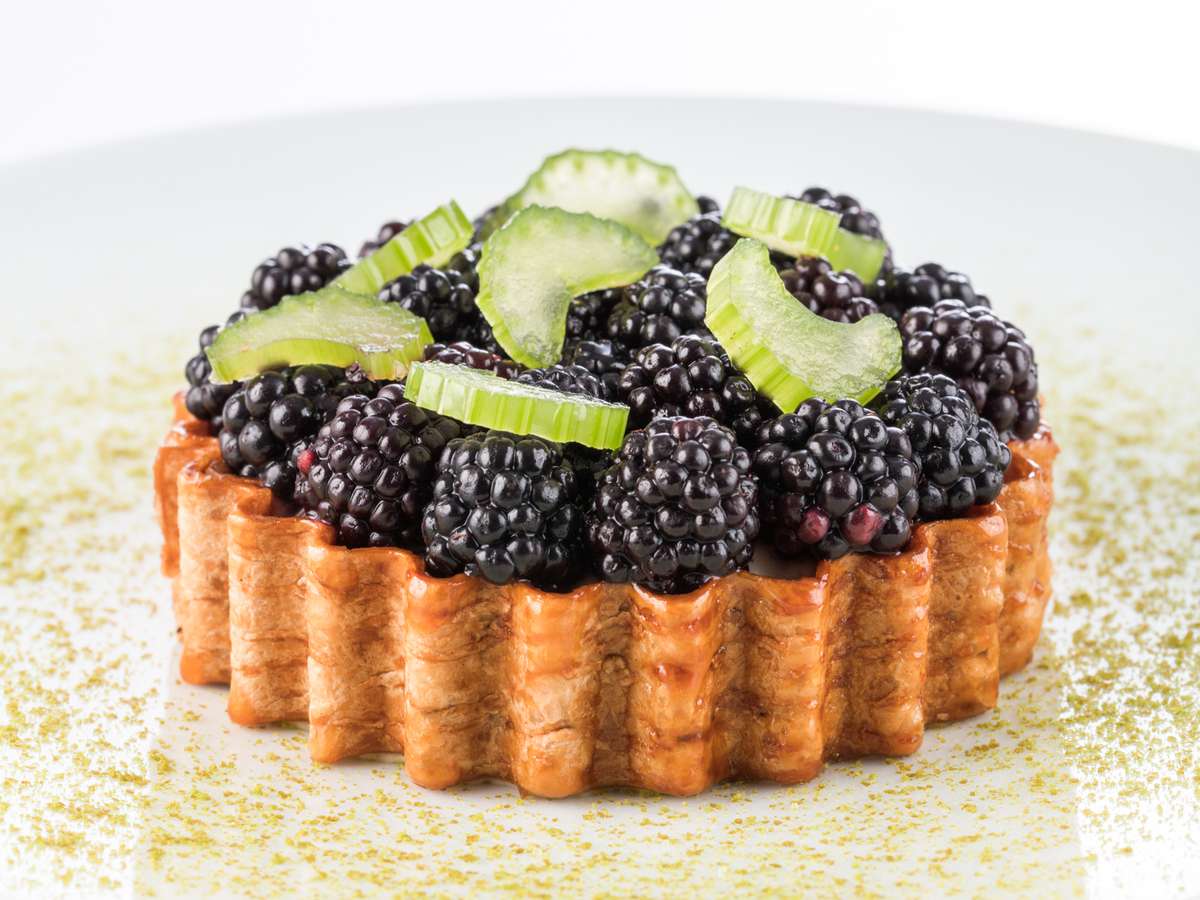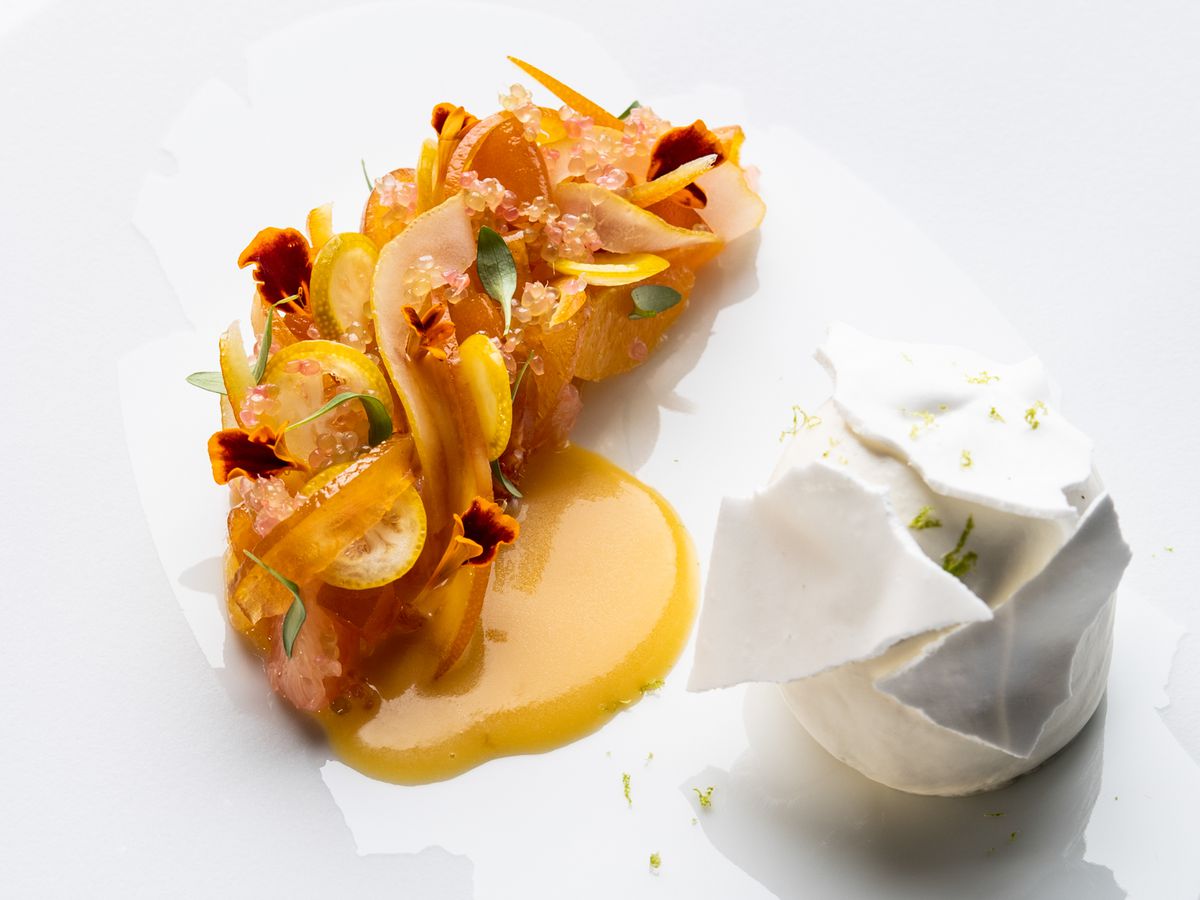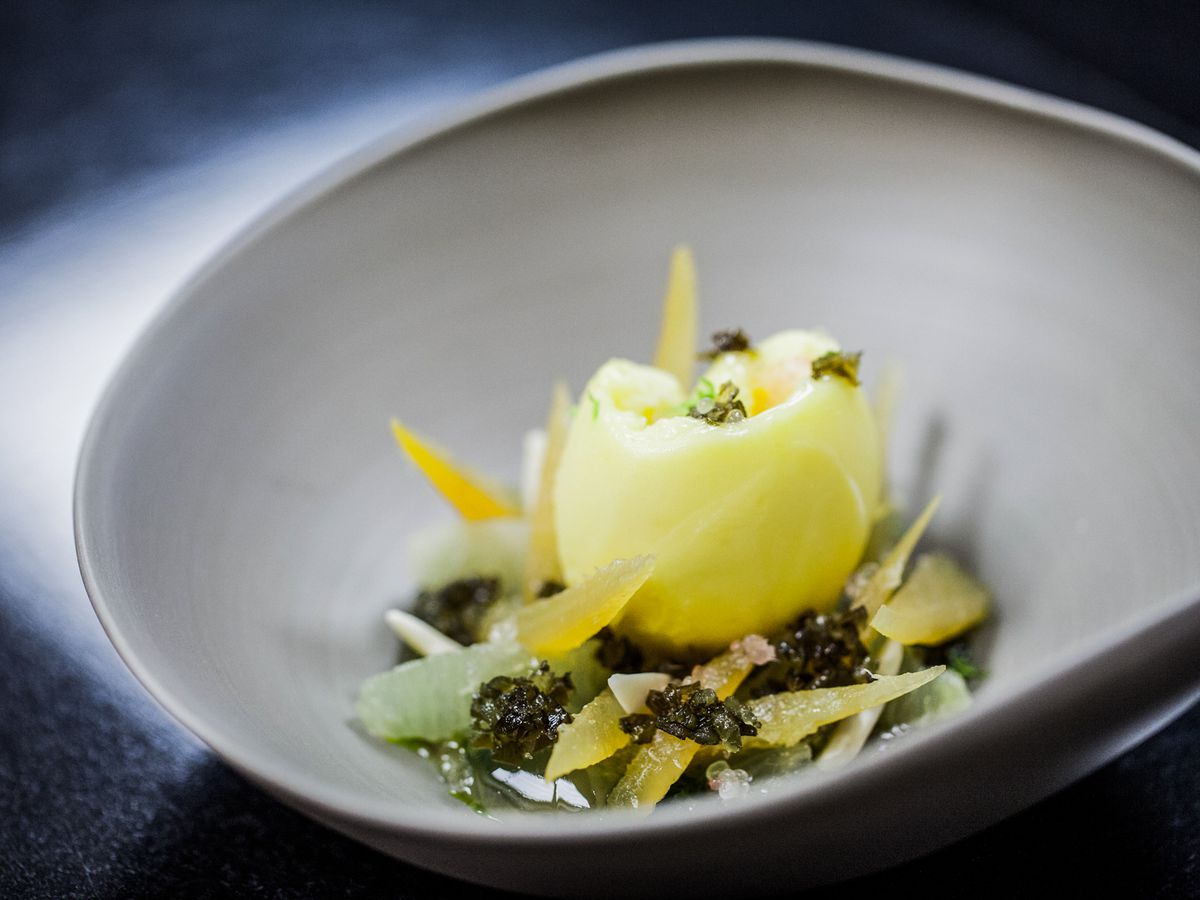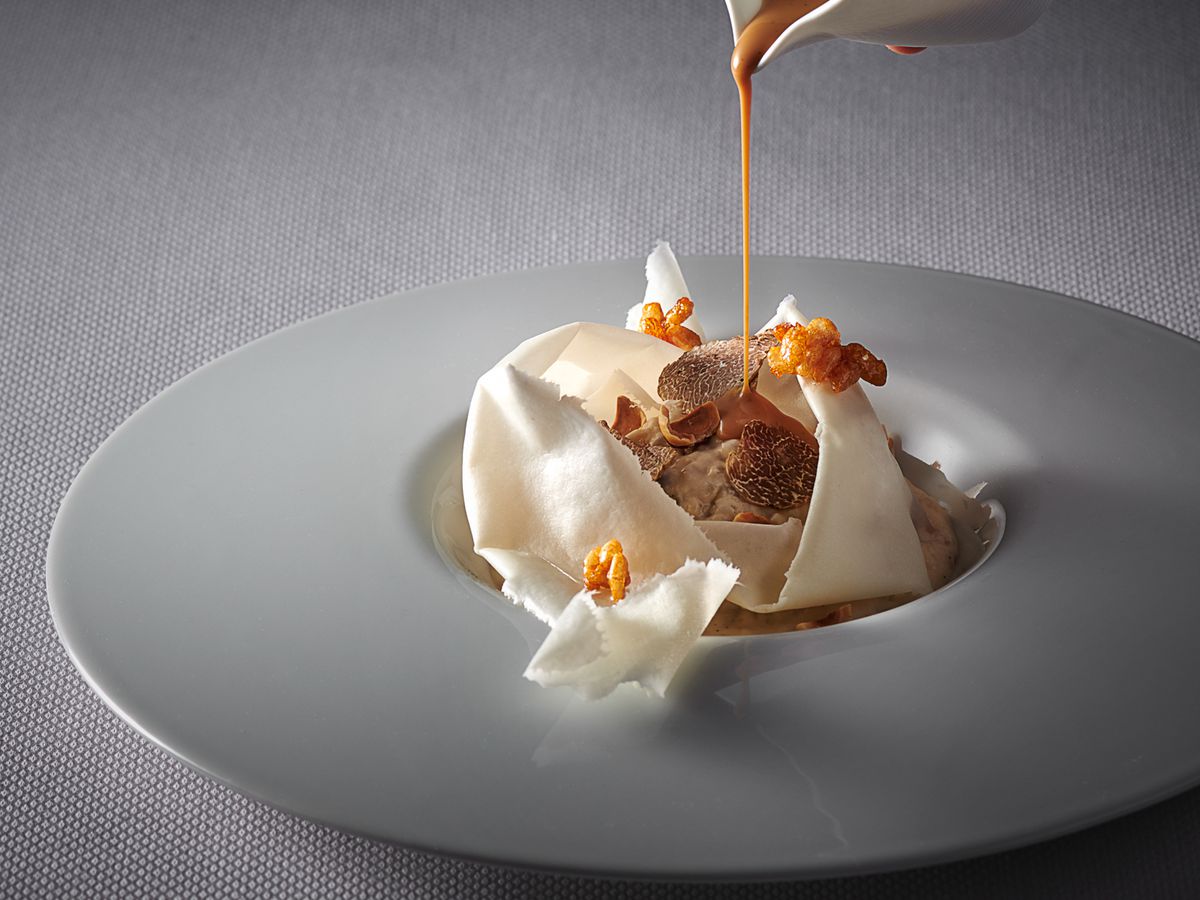The most exciting sweets in Paris are all about low sugar and high whimsy.
Updated January 22, 2020
While traditional macarons, eclairs, and mille-feuille will always be Paris’s calling cards, the city’s current crop of hot-shot pastry chefs are focused on constructing show-stopping sweets without relying too heavily on refined sugar. The results are bold flavors achieved through increased acidity and daring flavor juxtapositions. Here are four of the city’s pastry chefs who are changing the way city thinks about dessert.

Francois Perret, Ritz Paris
At Ritz Paris, Francois Perret is on a quest for juste sucre, the perfect ratio of sweetness to acidity, as he recasts classic desserts of his childhood—marble cake, the madeleine, rice pudding—into gastronomic trompe l’oeil. “Attaining ‘juste sucre’ allows one to enjoy desserts without being overwhelmed by too much sugar,” Perret says. “When something is too sweet, you feel the need to have a glass of water after the dessert. With balance, flavor will evolve in the mouth, like a sip of fine wine.”
He uses sweetness sparingly, often replacing refined sugar with honey or fruit reductions, and employs intense caramelization to add depth to desserts. This is seen in Perret’s popular Entremets Madeleine, a light-as-air, oversized sponge cake sweetened with chestnut honey as well as his Crème Caramel, a dessert that achieves hearty tang thanks to salted and heavily caramelized sugars plus crisp, roasted almonds.

Savory ingredients, too, make less sweet desserts compelling. In Perret’s capable hands, the marriage of celery sorbet and a wild blackberry tart is somehow thrilling. Equally dynamic is Le Chocolat Poivre et Sel, a fantastical take on an iced chocolate parfait, where the commingling of raspberry vinegar granite, fleur de sel, kampot pepper and 73 percent Jamaican chocolate yield complexity.
Perret’s commitment to pushing the limits of taste is underscored in Le dîner sucré-salé, a twice yearly dinner event (the next one will be held on February 14, 2020) composed entirely of offbeat sweet and savory combinations, a la hazelnut and parmesan meringue, grapefruit and cauliflower brioche, fennel yogurt and caramelized popcorn with Piquillo pepper jam.

Michael Bartocetti, Four Seasons Hotel George V
Thirty-six-year-old Michael Bartocetti realizes that standards of flavor takes years, even decades to transform. Thus, the Executive Pastry Chef at the Four Seasons Hotel George V describes his departure from too sweet sweets as “an evolution, not a revolution.” To coax maximum flavor from ingredients, say, vanilla beans, fennel or sudachi, he plays with acidity and bitterness. “I use dairy products, especially yogurt and fermented milks for a more acidic finish as well as coffee and malt (found in infused creams) to bring out the bitterness in a creation.”
Bartocetti’s newest creation exemplifies how he taps into fermentation to let raw ingredients sing. A rainbow of fresh, marinated citrus (cédrat lemon, caviar of finger lime, orange confit, grapefruit, grapefruit confit) is flavored with sweetened rice cream and served alongside zest-flecked sake ice cream topped with a vinaigrette of olive oil, lime, lemon and pink pomelo.
For this year’s yule log, an almost too-chic- to-eat homage to the orchid, Bartocetti used Meyer lemon zest and quasi-bitter Tulakalum cacao from Belize to strike a balance with the dessert’s sweeter elements, almond biscuit, hazelnut praline and clover infused cream.

Jessica Prealpato, Hôtel Plaza Athénée
Seaweed? Dark beer? Barley crumble? Celebrated for her rogue approach to desserts, the 33-year-old head pastry chef (and the first woman to hold the title of World’s Best Pastry Chef by World’s 50 Best Restaurants ranking in 2019) at the hotel’s splendid Alain Ducasse restaurant heeds a philosophy she calls “desseralité.” It’s a high-concept collision of dessert and naturalité that highlights the rawness of a product—think bitterness of beer, sharpness of persimmon, acidity of lemon—in both flavor and presentation.
“I put forward the fruits in the rawest way possible, respecting the seasonality and the suppliers with whom we work. For example, our lemon seaweed dessert, Citron niçois et algues kombu à l’estragon, highlights the acidity of the fresh lemon and the bitterness of its skin. Another dish, Creme onctueuse d’orge malté, bière givrée et houblon highlights the hoppiness of beer,” she says. Prealpato is careful to point out that adhering to nature translates into not-so-sweet creations. She amplifies the natural sugars of fruit and adds sweetness (refined sugar, honey or even birch water) only as a seasoning.

Julien Alvarez, Le Bristol
“A gourmet dessert does not have to be sweet. But, sugar also means pleasure and taste. We must find the right balance between the two,” says Julien Alvarez, the master of haute pâtisserie at Le Bristol. His bijou Ananas Victoria underscores this concept; it’s a dessert where lime, ginger, and passion fruit inject an acidic kick to the sweeter pineapple sorbet and cream.
Incorporating elements of traditional cookery is an Alvarez hallmark. Alba white truffle ice cream and rice pudding studded with hazelnuts, rice puffs and a dusting of truffle shavings illustrate an artful equilibrium between sweet and savory. Gastronomic sauces are another inspiration. Apple vinegar enlivens his Millefeuille Pomme, an assemblage of candied apple, cinnamon scented cream, quince, and celeriac layered in puff pastry with quince sorbet. Similarly, a smoked vanilla-laced milk emulsion is the aromatic piece de resistance behind Féves de Cacao, a dish of sea salt caramelized Guatemalan cacao nibs and ice cream presented in a dried cacao pod.
This story originally appeared in Food and Wine on January 22, 2020.


0 Comments